Introduction to Differentiating Emotional Reality and Perception
In our daily lives, we constantly interpret the world around us through perceptions shaped by personal beliefs, past experiences, and emotional states. Recognizing the difference between our internal emotional reality and objective perception is essential for effective communication, emotional intelligence, and mental well-being. This article explores how perception and feelings interact, how they can distort each other, and practical techniques to discern the true from the perceived.
Defining Perception and Reality
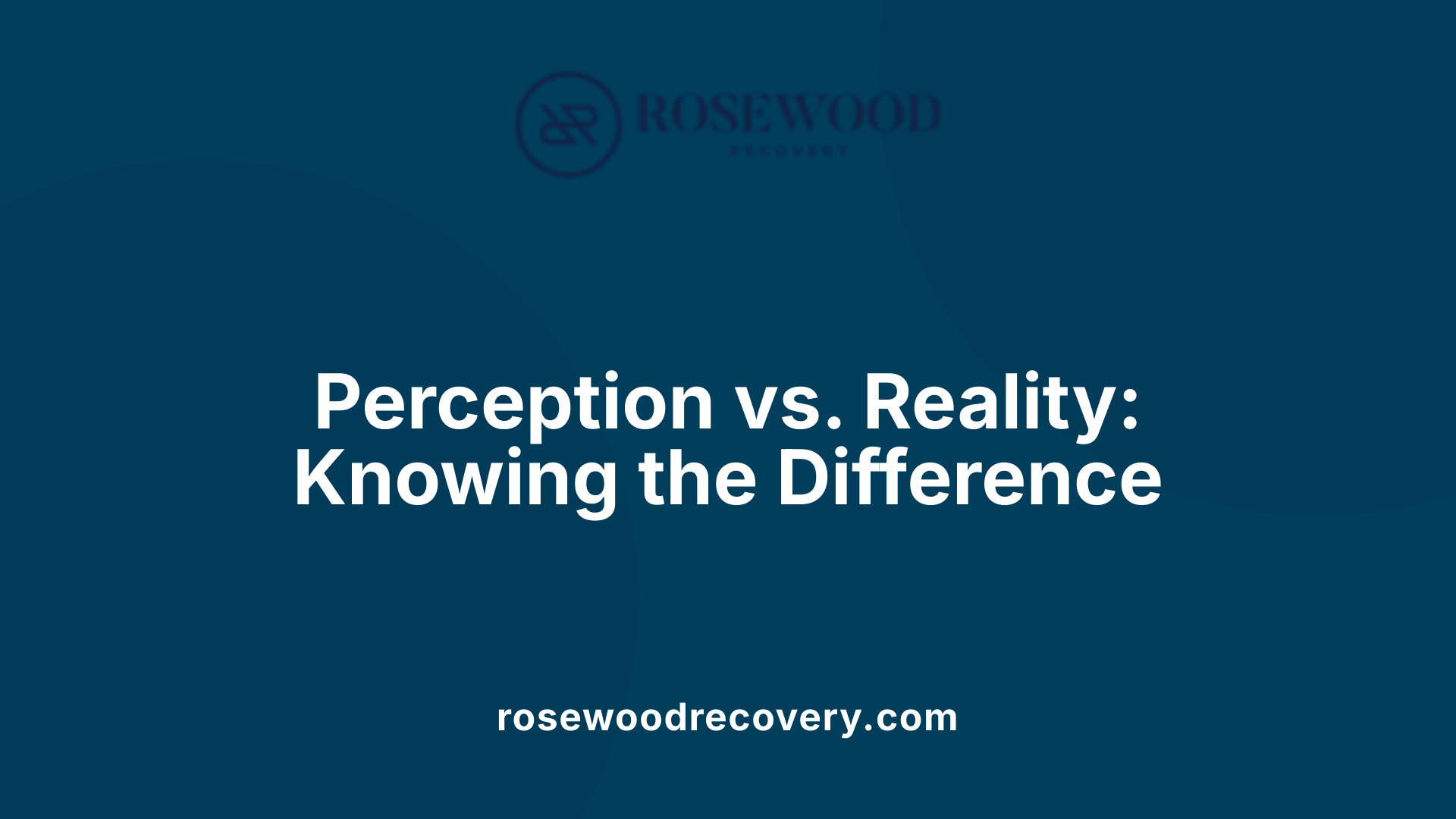
What is perception, and how does it differ from reality?
Perception is essentially the way we interpret, understand, or mentally picture the world around us. It is a subjective process that happens entirely in our minds, shaped by various factors such as past experiences, emotions, assumptions, and cognitive biases. This mental shortcut allows us to make sense of the information our senses collect, but it is inherently limited because it filters reality through personal filters.
Reality, in contrast, refers to the world as it actually exists, independent of our beliefs or perceptions. It is the objective state of things—what is true regardless of whether we see or understand it correctly. Reality exists whether we perceive it or not, and it is self-sufficient and not subject to personal viewpoints.
The difference between perception and reality is crucial because perception influences how we interpret our experiences and behave accordingly. Our perception acts like a lens that can distort or color our understanding, sometimes leading us to see things as better or worse than they truly are. For example, a person might perceive a coworker’s brief response as dismissive due to their own insecurities, even if the coworker was simply busy.
While perception helps us navigate daily life and make quick decisions, it can sometimes lead us astray. Cognitive biases—such as confirmation bias or emotional distortions—can result in perceptions that deviate significantly from the actual facts. Recognizing this gap allows us to adopt strategies like verifying facts, questioning assumptions, and seeking multiple viewpoints.
Acknowledging that perception is fallible, we foster better communication, build empathy, and improve decision-making. When we understand that our perception might be skewed, we become more open to adjusting our views to better align with reality, leading to healthier relationships and more accurate understanding of the world around us.
How Emotions Influence Perception
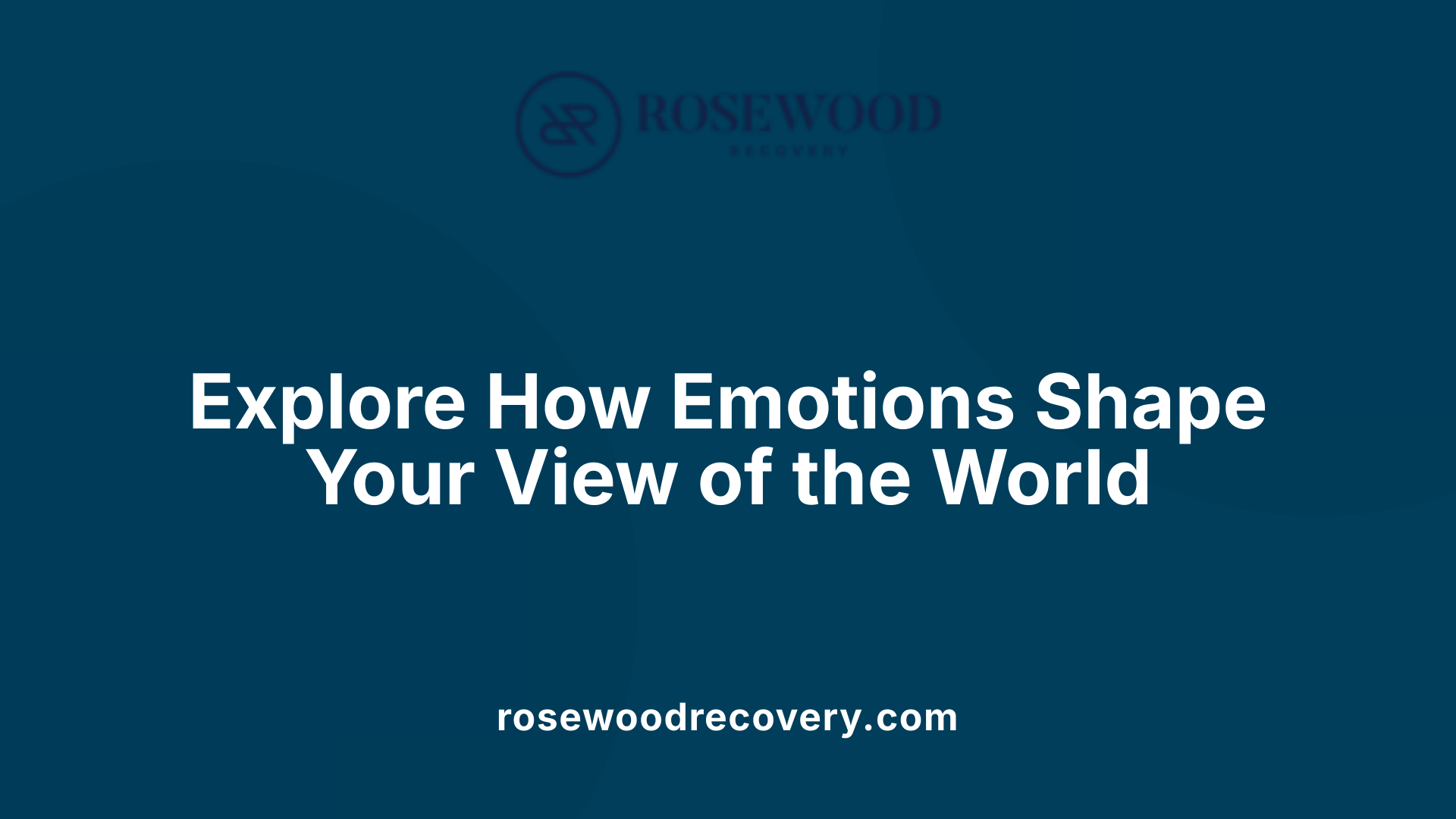
How do perception and emotional states influence subjective experience?
Perception and emotional states are closely intertwined, shaping how individuals experience and interpret their surroundings. Emotions serve as a filter that biases attention towards certain stimuli, emphasizing threats or rewards, which can distort the perceived reality. For example, feelings of fear may heighten sensitivity to potential dangers, leading to overestimation of threats like heights or distant objects. Conversely, happiness can broaden focus and enhance perceptions of ease or safety.
This emotional influence extends to visual processing as well. Certain emotions can alter spatial perception — such as overestimating the steepness of hills when afraid of height, or perceiving distances as longer when anxious. Mood states like sadness or anger also impact how we interpret our environment, often making situations seem more challenging or threatening than they truly are.
Emotions don't just skew perception externally—they also affect memory and subjective experience. Emotional events tend to be remembered more vividly, boosting confidence in the accuracy of those memories even if the actual events are distorted. This can create a feedback loop where perception and emotion reinforce each other, distorting an individual's sense of reality.
Furthermore, feelings influence our perception of time, often making emotionally charged moments seem longer or shorter depending on the context. For instance, fear can make a brief moment feel elongated, heightening perceived danger.
These interactions have adaptive functions. Heightened perception under emotional states can prioritize critical information, aiding survival by alerting us to danger or opportunity quickly. Conversely, strong emotions can distort reality, leading to biases or errors in judgment if unchecked.
In summary, our perception is not a passive receipt of sensory data but an active process shaped continually by our emotional state. Recognizing this connection helps us understand how subjective experiences are crafted and why perceptions can vary so dramatically between individuals, especially in emotionally charged situations.
Differentiating Feelings from Perceptions
Immediate physical sensations versus mental thoughts
Understanding the difference between feelings and perceptions begins with recognizing how each manifests. Feelings are immediate sensations or physical responses that we directly experience in the body, such as warmth when happy, tension when anxious, or fluttering in the stomach when nervous.
In contrast, perceptions are mental constructs—beliefs, thoughts, or stories about those sensations or about external events. For example, feeling a tight chest might be interpreted as anxiety, but the sensation itself is a physical state, while the perception involves the narrative, such as "I am stressed" or "something bad is going to happen."
Feelings as truths of the moment
Feelings are often considered to be immediate truths of the moment. They are personal and cannot be argued with or challenged because they reflect our current emotional response. For instance, feeling sad or angry right now represents your genuine emotional state, regardless of external circumstances.
Because feelings are the body's honest response, recognizing them helps validate our experiences. However, feelings alone do not define objective truth; they are subjective and situational.
Perceptions as beliefs or stories
Perceptions involve our beliefs, interpretations, and mental stories about ourselves, others, or situations. For example, perceiving someone as hostile because they raised their voice is a mental story influenced by past experiences or biases.
These perceptions are not necessarily factual or accurate—they are influenced by our mental filters, biases, and assumptions. They often contain stories like "I'm not good enough" or "this situation is hopeless," which shape how we interpret what is happening.
Recognizing distortions caused by beliefs
One challenge is that perceptions can be distorted by our beliefs or emotional states. For instance, insecurity might lead us to perceive neutral comments as criticism, or past hurt can color current interactions negatively.
Distortions caused by faulty beliefs or assumptions can lead to misunderstandings, conflicts, or feelings of distress. Recognizing when perceptions are influenced by such distortions is crucial for gaining clarity.
How can I distinguish feelings from factual perception?
To differentiate feelings from perceptions, start by paying attention to how each is experienced. Feelings are immediate, physical sensations—like warmth, tension, or a racing heart—that rise spontaneously and are felt directly in the body.
Perceptions, on the other hand, are mental thoughts or beliefs about the sensation or situation. If you notice a thought such as "I'm overwhelmed," it's a perception, an interpretation of your experience.
By asking yourself how a sensation is felt physically, you can identify whether it's an authentic feeling. Recognizing that perceptions often involve stories or judgments helps you see how they overlay your emotional state.
Understanding this difference allows for greater self-awareness. It helps you respond to emotions with clarity rather than reacting based on distorted perceptions.
Practical steps to distinguish feelings from perceptions
- Pause and observe: Notice whether what you're experiencing originates as a physical sensation or a thought.
- Describe in physical terms: Name the sensation (e.g., tightness in chest, nervousness in stomach).
- Identify interpretative thoughts: Recognize stories or judgments accompanying the sensation.
- Question the perception: Are these thoughts based on facts, or are they assumptions?
- Practice self-inquiry: Over time, this awareness fosters emotional clarity and conscious responses.
Developing the skill to distinguish feelings from perceptions enhances emotional intelligence, leading to better self-understanding and healthier interactions.
The Impact of Emotional States on Perception
How do emotional states alter perception of spatial layout and environment?
Emotional states can significantly influence how we perceive the spatial aspects of our environment. For example, feelings of fear can lead to an overestimation of height and distance, helping prepare the body for potential threats. This heightened perception acts as a protective mechanism, making steep hills seem even steeper or distances seem longer than they are. Conversely, positive moods like happiness tend to broaden our perceptual focus, making environments appear more inviting and manageable. Sadness, meanwhile, narrows our perceptual scope and can alter our interpretation of spatial cues, often making physical obstacles seem more formidable or distances more daunting.
Research shows that emotions don't just color our feelings—they actively shape the way we see the world around us. For instance, in a state of fear, individuals might perceive a shadow as an approaching threat more readily than when they are calm. This bias in perception underscores how emotional states serve an adaptive function, heightening alertness in the presence of danger.
The roles of fear, happiness, and sadness in perception
Each emotion uniquely influences perception. Fear tends to heighten sensitivity to environmental details, especially regarding threats, leading to overestimations that keep us cautious or alert. Happiness, on the other hand, promotes a broader perceptual focus, encouraging us to see the bigger picture and recognize opportunities instead of threats. Sadness often results in a more critical or narrowed view, affecting spatial perception and the interpretation of sensory information, possibly making situations seem more difficult or overwhelming.
These emotional effects extend beyond spatial perception to influence how we interpret visual illusions or judge the steepness of a hill from a balcony. For example, an individual feeling anxious may see a hill as steeper than it actually is, while someone in a good mood may see it as less daunting.
The affect-as-information hypothesis
The affect-as-information hypothesis posits that emotions provide embodied cues that inform our perception of value and importance. When we experience fear, our emotional response signals that something in the environment is threatening, which heightens our perceptual sensitivity to danger cues. Similarly, feeling happy can serve as a signal that our current environment is safe and supportive, broadening perceptual capacity.
This hypothesis explains how our emotional state acts as a lens, filtering and shaping our perception based on current needs or threats. For instance, fear heightens perceptual accuracy for detecting threats, supporting survival, while positive mood states facilitate greater exploration and understanding of the environment.
Understanding the link between emotion and perception is crucial for grasping how our mental states influence our experience of reality. Recognizing these influences allows us to better interpret how feelings can distort our perceptions of spatial layouts, risks, and opportunities, ultimately shaping our behaviors and decisions based on how we interpret our surroundings.
Techniques to Align Perception with Reality
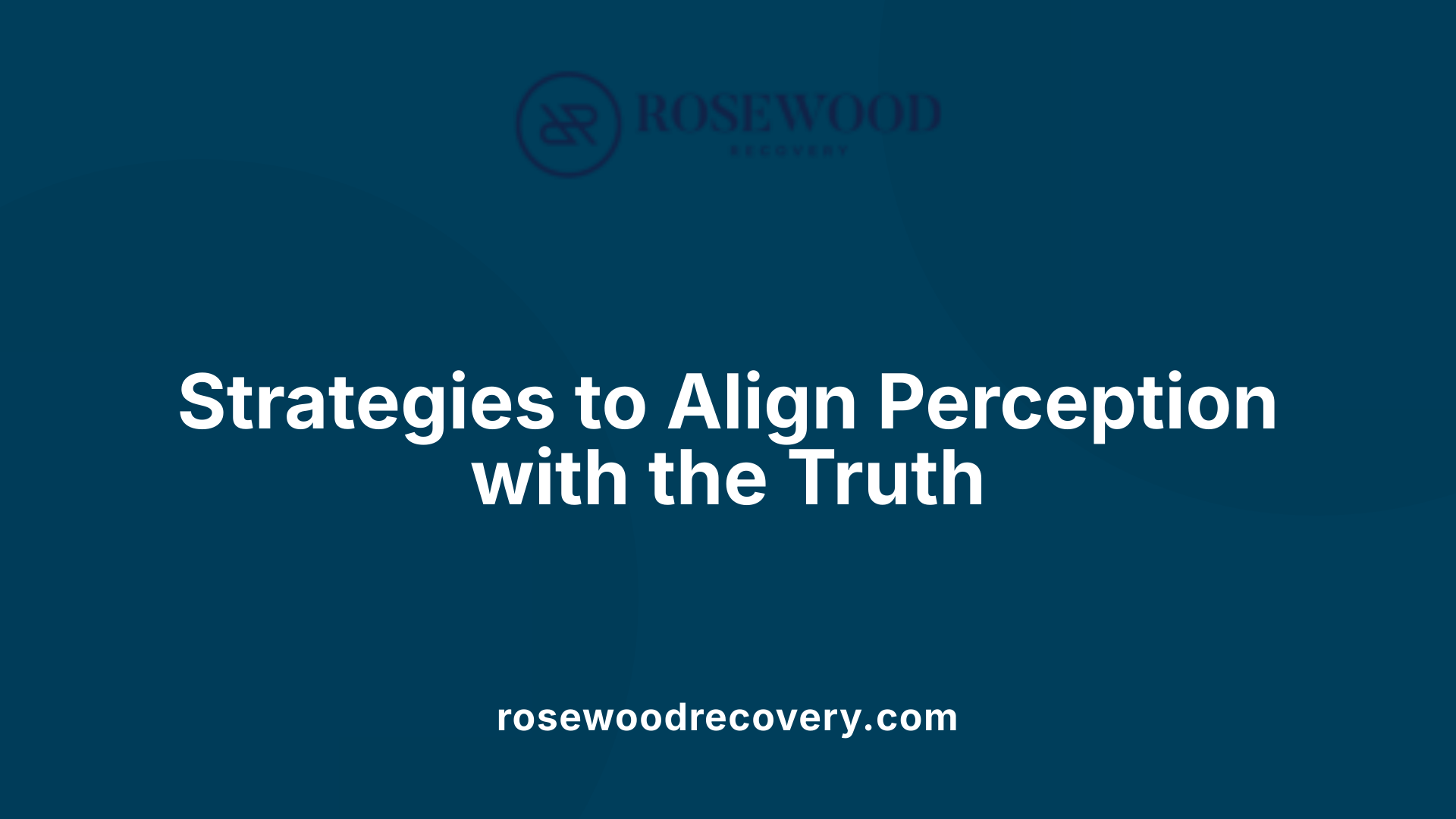
What techniques can help align perceptions with objective reality?
To bring perceptions closer to the actual state of things, adopting a systematic approach similar to a detective is highly effective. This involves gathering concrete evidence and questioning initial assumptions. Instead of jumping to conclusions based on feelings or limited data, it’s beneficial to consider multiple explanations for an event, helping to avoid biases and distortions.
Regular self-assessment methods, such as journaling thoughts and emotions, enable individuals to reflect on their perceptions and identify patterns of distortion or unwarranted beliefs. Seeking feedback from trusted, credible sources can provide an external perspective that challenges personal biases and ensures a more balanced understanding.
Practicing mindfulness increases awareness of unconscious thought processes and emotional reactions that influence perception. This heightened self-awareness helps distinguish between reality and subjective interpretation shaped by cognitive biases.
Reinterpreting perceptions with simplicity, often through the lens of Occam’s Razor—which favors the simplest explanation—reduces complexity and assumptions. Setting clear, measurable goals in personal and professional life provides concrete benchmarks, grounding perceptions in verifiable facts.
Finally, taking deliberate actions aligned with true understanding, and actively challenging limiting beliefs, supports more accurate and realistic perceptions. These steps are essential in fostering a view of the world that reflects the true circumstances rather than subjective distortions.
Distorting Effects of Emotional Experiences
How can emotional experiences distort perception?
Emotional states have a profound impact on how we interpret the world around us, often distorting perception in ways that prioritize emotionally salient information.
When we experience intense feelings like fear, anger, or happiness, these emotions can influence both our sensory perceptions and higher-level interpretations. For instance, fear, especially in situations related to height or threat, can enhance sensory sensitivity. This heightened awareness can lead to overestimations of height or distance because the amygdala—the brain’s emotion center—amplifies sensory signals related to threat or danger.
Such emotional hijacking results in perceiving a cliff as steeper, a hallway as longer, or a hill as taller than they truly are. People with phobias, for example, tend to see fearful stimuli as more overwhelming than they actually are, which is an adaptive response designed to trigger caution.
Emotions also influence spatial perception through embodied appraisals. When someone feels overwhelmed or anxious, their sense of spatial layout may be skewed, making obstacles appear larger or more intimidating. Conversely, positive emotions might cause environmental features to seem more inviting or less challenging.
Time perception is not immune to emotional influence either. Arousal—such as feeling anxious or excited—can distort how we perceive the passage of time. During heightened emotional states, time can seem to speed up or slow down. For example, stressful moments might feel unusually long, while enjoyable experiences seem to pass quickly.
Research shows that these perceptual biases serve evolutionary functions, preparing individuals for action in threatening situations by magnifying perceived dangers. However, such distortions can diminish our ability to accurately assess reality, leading to misjudgments and sometimes irrational behaviors.
In summary, emotional experiences distort perception by biasing sensory processing and cognitive interpretations toward emotionally relevant stimuli. This intertwining of emotion and perception ensures rapid responses to threats but can also result in exaggerated perceptions that are far from objective truths.
Understanding and Recognizing Perceptual and Emotional Biases
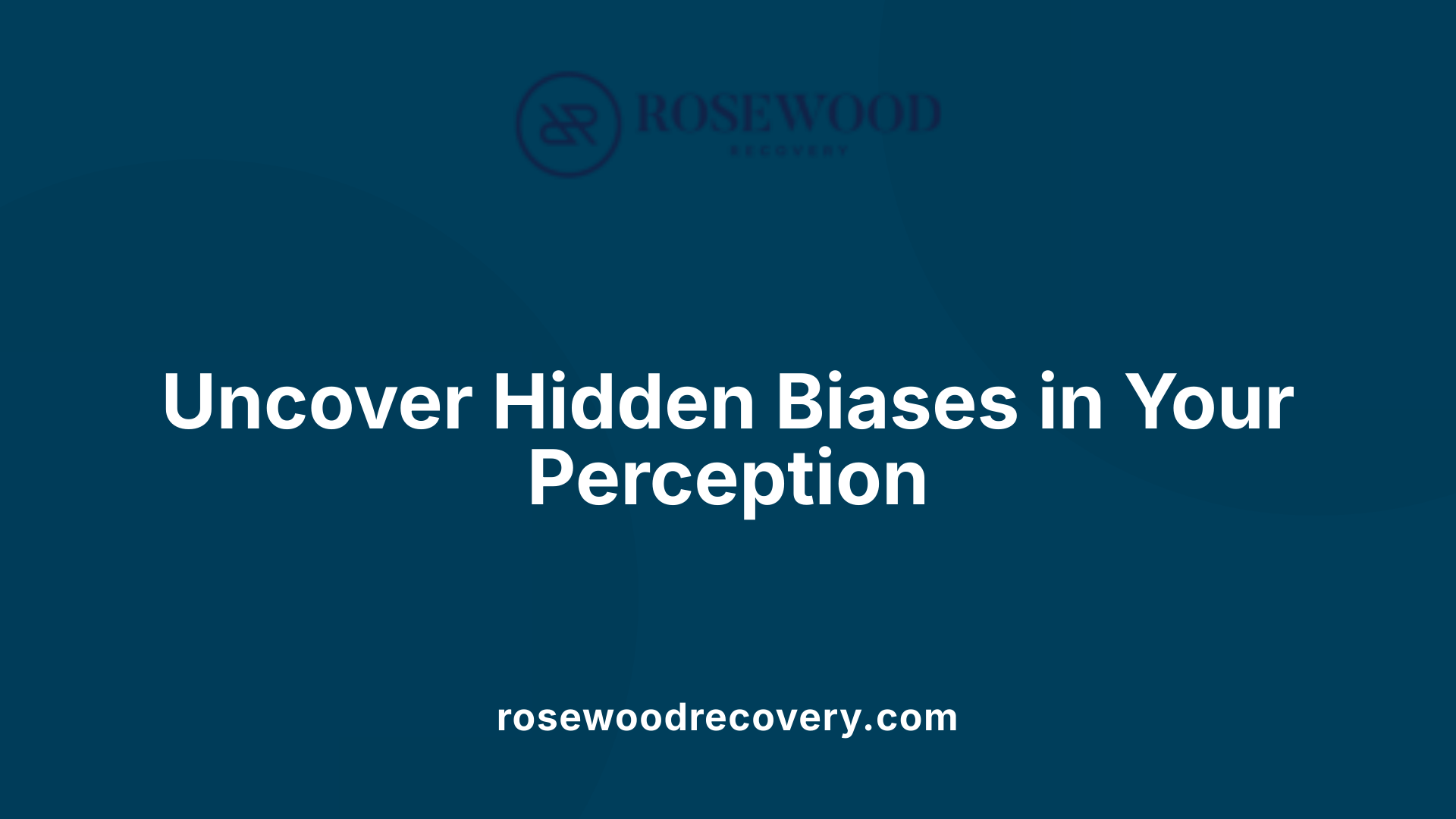 Perceptions are natural filters through which humans interpret the world around them. However, these mental shortcuts are often influenced by cognitive biases that distort our view of reality. For example, confirmation bias can lead individuals to favor information that supports their existing beliefs, while neglecting evidence that contradicts them. Daniel Kahneman, a renowned psychologist, identified numerous cognitive biases that systematically shape our social reality, often causing it to diverge from the actual state of the world.
Perceptions are natural filters through which humans interpret the world around them. However, these mental shortcuts are often influenced by cognitive biases that distort our view of reality. For example, confirmation bias can lead individuals to favor information that supports their existing beliefs, while neglecting evidence that contradicts them. Daniel Kahneman, a renowned psychologist, identified numerous cognitive biases that systematically shape our social reality, often causing it to diverge from the actual state of the world.
One common distortion occurs through projection, where people assign their own feelings and thoughts onto others. For instance, if someone feels anxious, they might assume others are also anxious around them, which might not be true. This projection can result in misunderstandings and misinterpretations that affect relationships and social interactions.
Recognizing these biases and the influence of internal emotional states is essential. Emotions—such as fear, sadness, or anger—are personal and immediate reactions rooted in biological functions. They serve crucial roles, like alerting us to danger or motivating action, but they can also cloud judgment. Emotions can hijack perception, leading us to see threats where none exist or to interpret ambiguous signals negatively.
It is important to differentiate between feelings and perceptions. Feelings are personal emotional responses that are valid in the moment but are not facts. Conversely, perceptions are beliefs, ideas, and thoughts filtered through our emotional lens. For example, feeling 'not good enough' is a perception influenced by past experiences and current mood, not an objective truth. Learning to identify when perceptions are distorted by emotions allows individuals to step back and assess more accurately.
To navigate these biases, one effective strategy is validation and perspective-taking. Respecting others' perceptions, even when they differ from one's own, fosters empathy and better communication. Asking questions, seeking evidence, and challenging initial perceptions based on assumptions are practical ways to approach reality more objectively. The 'check the facts' technique—evaluating clear, undeniable facts—can unearth the truth behind perceptions.
Society and culture add noise, often steeped in collective biases and stereotypes that further distort perception. Cultural noise influences how we interpret behaviors and facts, shaping societal cohesion and decision-making. Recognizing the impact of societal influences enables a broader, more understanding perspective.
In summary, perception is a complex interplay of personal mental shortcuts, emotional states, societal influences, and cognitive biases. Developing awareness of these factors through reflection, validation, and evidence-based assessment helps bridge the gap between perception and reality, leading to healthier relationships and more effective decision-making.
Implications for Personal Growth and Social Interaction
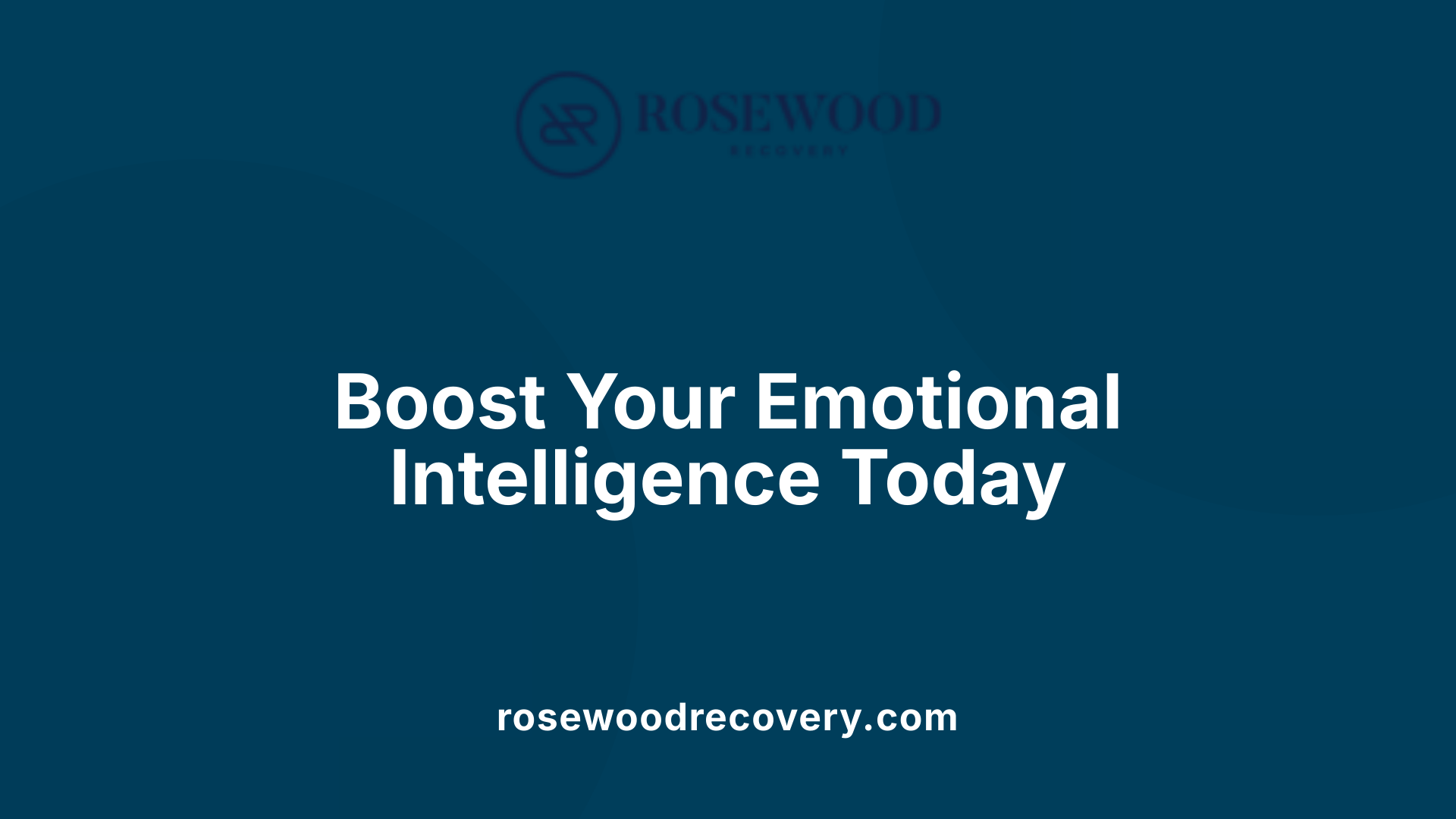
How can understanding perception and emotional processing improve emotional intelligence?
Understanding how perception and emotional processing work together can significantly boost emotional intelligence (EI). When people recognize that perceptions are subjective and shaped by personal experiences, biases, and emotional states, they become better equipped to interpret both their own feelings and those of others.
For instance, being aware that a perceived insult might not reflect the actual intent allows individuals to respond more calmly and empathetically rather than reacting impulsively. This awareness also aids in self-regulation, as understanding how emotions influence perception can help manage reactions and avoid misunderstandings.
Programs like WEIT (Ways to Emote and Interpret Thought) exemplify how targeted interventions can improve emotional perception. These frameworks teach people to recognize their emotional states quickly and understand their impact on perception and behavior. Heightened awareness from such training can lead to more accurate emotional readings and better social interactions.
A deeper grasp of perception's role in emotional processing enhances skills like empathy, allowing us to appreciate the world from others’ perspectives. When we see others’ perceptions as valid, even if different from our own, trust and connection grow stronger.
Additionally, techniques such as cognitive reappraisal—reframing how we interpret a situation—and mindfulness—remaining present without judgment—further improve our capacity to regulate emotions and interpret social cues. Over time, this leads to more effective conflict resolution, improved communication, and healthier personal and professional relationships.
In summary, recognizing that perceptions are fluid and influenced by internal states fosters more accurate emotional awareness. Such understanding enhances our ability to navigate social landscapes, promote empathy, and cultivate emotional resilience, all of which are vital for personal development and harmonious social interactions.
Final Thoughts on Perception and Emotional Clarity
Distinguishing emotional reality from perception is a vital skill that enhances personal well-being, relationships, and decision-making. Recognizing the subjective nature of perceptions and how emotions color our interpretation of external facts enables us to respond more consciously and accurately to life's challenges. By practicing mindfulness, questioning assumptions, and validating facts, we can bridge the gap between perception and reality, fostering greater clarity, empathy, and emotional resilience.
References
- Perception Is Not Reality | Psychology Today
- Perception Is Reality: How to See From Other Perspectives
- The difference between feelings and perceptions: - DanielMoor
- Perception vs. Reality: When What You See Isn't the Whole Story
- Perception vs. Perspective: Navigating the Landscape of Reality and...
- Perception is Reality - Hello Brain
- Emotion and Perception: The Role of Affective Information - PMC




